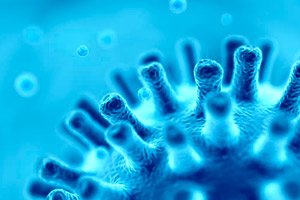
All iLive content is medically reviewed or fact checked to ensure as much factual accuracy as possible.
We have strict sourcing guidelines and only link to reputable media sites, academic research institutions and, whenever possible, medically peer reviewed studies. Note that the numbers in parentheses ([1], [2], etc.) are clickable links to these studies.
If you feel that any of our content is inaccurate, out-of-date, or otherwise questionable, please select it and press Ctrl + Enter.
Lam-derived molecules target latent strains of HIV
Last reviewed: 02.07.2025
 ">
">A research team at Georgia State University has developed tiny, powerful molecules that can target latent strains of HIV. The source? Antibody genes from llama DNA.
The study, led by biology associate professor Jianliang Xu, uses nanobodies derived from llamas to broadly neutralize multiple strains of HIV-1, the most common form of the virus. The team’s new research was published in the journal Advanced Science.
"This virus has found a way to evade our immune system. Normal antibodies are bulky, so they have a hard time finding and attacking the surface of the virus. These new antibodies may make it easier," said Jiangliang Xu, an assistant professor of biology at Georgia State University.
Scientists seeking effective treatment and prevention of HIV have been working with camelids such as llamas for about 15 years. This is because the shape and characteristics of their antibodies make them more flexible and effective at identifying and neutralizing foreign objects such as the HIV virus.
This new research presents a broadly applicable method for improving the performance of nanobodies. Nanobodies are engineered antibody fragments that are about one-tenth the size of a typical antibody. They are made from flexible, Y-shaped heavy-chain-only antibodies — made up of two heavy chains — that are more effective at fighting certain viruses than typical light-chain antibodies.
Nanobodies are made from flexible, Y-shaped antibodies made up of heavy chain peptides that may be more effective in fighting certain viruses.
For the study, the scientists immunized llamas with a specially designed protein, which leads to the production of neutralizing nanobodies. Jiangliang Xu and his team then identified nanobodies that could target vulnerable sites on the virus. When the team created nanobodies in triple tandem — repeating short sections of DNA — the resulting nanobodies were remarkably effective, neutralizing 96 percent of different HIV-1 strains.
Further analysis revealed that these nanobodies mimic the recognition of the CD4 receptor, a key player in HIV infection. To enhance their effectiveness, the nanobodies were coupled with a broadly neutralizing antibody (bNAb), resulting in a new antibody with unprecedented neutralizing capabilities.
"Instead of developing a cocktail of antibodies, we can now create a single molecule that can neutralize HIV," said Jiangliang Xu. "We're working with a broadly neutralizing nanobody that can neutralize more than 90 percent of circulating HIV strains, and when we combine that with another bNAb that also neutralizes about 90 percent, together they can neutralize almost 100 percent."
Jianliang Xu began this research at the National Institutes of Health’s Vaccine Research Center in Bethesda, Maryland, where he collaborated with a team of more than 30 scientists. The team included Peter Kwong, a professor of biochemistry and molecular biophysics at Columbia University and a co-author of the study. Since Jianliang Xu arrived at Georgia State University in 2023, he has been mentoring Peyton Chan, a PhD candidate at Georgia State University. Together, they are working to expand these potential treatments.
Chan said she was excited about the prospects for innovative research.
"These nanobodies are the best and most potent neutralizing antibodies to date, which I think is very promising for the future of HIV therapy and antibody research," Chan said. "I hope that one day these nanobodies will be approved for HIV treatment."
Future efforts will focus on combining llama nanobodies with other existing bNAbs to determine whether some of these combinations can achieve 100 percent neutralization and offer new treatment options in the fight against HIV, according to Jiangliang Xu.
